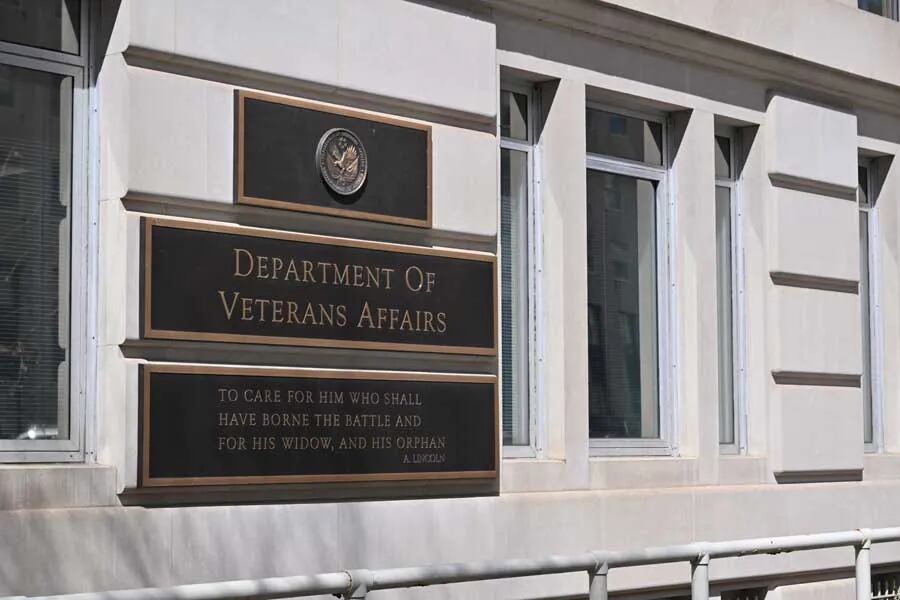Some military families will see a rise in their health care costs come January, even as they’re stretching their dollars to cover higher prices for food, fuel and other necessities.
Generally, if you’ve been paying out-of-pocket for Tricare in 2022, you’ll pay extra in 2023.
Active duty families in Tricare Select don’t pay annual enrollment fees, but they will see small co-payment increases, generally by a few dollars, for most services starting Jan. 1. Some will also see increases in their annual deductible, meaning they will have to spend more out of pocket before Tricare starts to pay.
There are also planned increases in co-payments and annual enrollment fees for retirees, their families and others, according to fee schedules just released by the Defense Health Agency.
Active duty service members and their families in Tricare Prime (including U.S. Family Health Plan) don’t pay annual enrollment fees, annual deductibles or out-of-pocket costs for covered services. Families pay only when they get nonemergency care without a referral, use non-network providers without authorization, or use a pharmacy other than a military pharmacy.
Active duty families in Tricare Select don’t pay annual enrollment fees either, but working age retirees, their family members and most others do, and those fees are going up.
Tricare for Life members don’t pay enrollment fees.
Tricare Open Season runs from Nov. 14 to Dec. 13. This is the only time of year when those eligible for, or enrolled in, Tricare Prime or Tricare Select can make changes to their health care coverage unless they have a qualifying life event during the year, such as a marriage, birth, permanent change of station move or retirement.
So, now is the time to scrutinize the costs to see what works for your situation. If you’re satisfied with your plan, you don’t have to take any action. Any changes you make will take effect on Jan. 1.
By law, there are differences in some costs based on when the sponsor entered the military. Those who entered before Jan. 1, 2018, are part of Group A, while those who entered on or after Jan. 1, 2018, are part of Group B.
RELATED

The out-of-pocket co-pays for visits through Tricare Select will increase by anywhere from $1 to $8, depending on the type of visit, and the status of the beneficiary. There are no costs for covered preventive care visits.
Some examples of in-network co-pays for services:
♦ Primary care outpatient visits in the Tricare Select network: For active duty families, the cost increases by $1, to $25, for those in Group A, and by $2, to $18, for those in Group B. For working-age retirees, it increases by $2, to $34, for those in Group A.
♦ Primary care outpatient visits for working age retirees in Tricare Prime: Co-pay increases by $2, to $24.
♦ Urgent care center visits in Tricare Select: For active duty families in Group A, co-pay increases by $1, to $25, and by $2, to $24, for Group B. For working-age retirees in Group A, it increases by $2, to $34.
♦ Urgent care center visits in Tricare Prime for working-age retirees: Co-pays increase by $3, to $36.
An exception to these cost upticks is specialty care outpatient visits, where the co-pay decreases by $1, to $37, for Group A active duty family members in Tricare Select and by $1, to $49, for working age retirees and their families. But there is a $2 co-pay increase, to $30, for active duty families in Group B.
For care with a Tricare-authorized provider outside the network, active duty family members in Tricare Select are responsible for a 20% co-pay; working-age retirees have a 25% co-pay.
Enrollment fees
Active duty families don’t pay annual enrollment fees for Tricare Prime or Select.
Working-age retirees:
Tricare Prime — Group A will pay $351.96 per individual, up from $323; and $703.92 per family, up from $647.
Tricare Select — Group A will pay $171.96 per individual, up from $158; and $345 per family, up from $317.
Annual deductibles
Deductibles are the amount the beneficiary must pay before Tricare starts to pay.
Tricare Select:
Active duty family members in Group A, grades E-4 and below, pay $50 per individual and $100 per family (no change). Group B members pay $60 per individual, up from $56, and $121 per family, up from $112.
Active duty family members in Group A, grades E-5 and above, pay $150 per individual and $300 per family (no change). Group B members pay $182 per individual, up from $168, and $365 per family, up from $336.
Working-age retirees in Group A pay $150 per individual and $300 per family (no change).
Catastrophic cap
The catastrophic cap is the maximum amount beneficiaries pay out of pocket in a year for covered services before Tricare will start picking up 100 percent of the cost. The cap is increasing for some beneficiaries in Prime and Select programs, except for active duty families in Group A, where it remains at $1,000, and retirees in Tricare Prime Group A, where it remains at $3,000.
The catastrophic cap for certain active duty family members and working age retirees will increase by about 8.7%. By law, DoD is required to raise certain beneficiary out-of-pocket cost shares by an amount equal to the annual cost of living adjustment for retirees, which is 8.7% for 2023.
For active duty families in Group B, the catastrophic cap has increased by $97, to $1,217 for both Tricare Prime and Select. There are also increases in the cap for working-age retirees, their families and others in Tricare Select. Those in Group A will see an increase of $322, to $4,028.
Increases for premium-based plans
As announced earlier, the rates have increased for the Tricare premium-based programs — Tricare Young Adult, Tricare Reserve Select and Tricare Retired Reserve — as determined earlier by the Defense Health Agency. Those increases take effect Jan. 1, 2023.
The new monthly premiums are:
♦ Tricare Young Adult: For TYA Prime, an increase of 11% to $570 a month. For TYA Select, a 10% increase to $291 a month.
♦ Tricare Retired Reserve: An increase of 9%, to $549 a month, for the member only; and to $1,321 for the member and family.,
♦ Tricare Reserve Select: An increase of 4% to $48 a month, for member only; and to $240 for member and family.
Military family advocates are concerned about the increases in the Tricare Young Adult fees.
“There’s a huge jump from 2022 to 2023,” said Eileen Huck, government relations senior deputy director for the National Military Family Association. “That’s not sustainable. It’s not something the families or young people can afford. It’s really putting military families with young adult dependents at a huge disadvantage.
“Our families’ out-of-pocket costs keep going up and up and up. … Why are we are asking families to pay these higher costs when the value of the benefit isn’t increasing? In fact, it’s decreasing.”
Karen has covered military families, quality of life and consumer issues for Military Times for more than 30 years, and is co-author of a chapter on media coverage of military families in the book "A Battle Plan for Supporting Military Families." She previously worked for newspapers in Guam, Norfolk, Jacksonville, Fla., and Athens, Ga.





